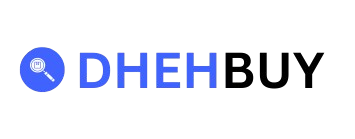In the crowded field of social media tools and automation platforms, Tailwind has carved out a niche — especially for Pinterest and Instagram marketers. The promise is compelling: schedule, optimize, and grow without having to manually pin or post every day. But does Tailwind deliver on that promise? In this review, we’ll explore what Tailwind offers, its pros and cons, how it stacks up in 2025, and whether it’s a tool worth investing your time and money into.

Tailwind is a marketing and scheduling platform tailored primarily for Pinterest (and increasingly Instagram and Facebook) that helps content creators, bloggers, e-commerce brands, and social media managers streamline the process of planning, publishing, and optimizing posts.
Rather than just being a scheduler, Tailwind integrates content tools (like design, copy generation, and templates), analytics, and “smart” features (e.g., SmartSchedule, AI tools) to help users “do more with less.”
One of its historical strengths has been its alignment with Pinterest, having been an official Pinterest partner for many years.
Key Features & Capabilities
Here’s a breakdown of Tailwind’s most important features and how they function in practice:
1. Scheduling & Automation
- Tailwind offers visual calendar scheduling, interval pinning, and drag-and-drop tools to manage when and where your posts go.
- You can bulk edit and schedule posts in batches, reducing the time needed to plan out weeks or months at once.
- “SmartSchedule” suggests optimal posting times based on engagement data.
- Note: Some users report that multi-image auto-posting (e.g. carousels) is still limited or unavailable.
- 2. Content Creation & AI Tools
- Tailwind includes tools such as Ghostwriter AI, which helps generate titles, captions, or marketing copy.
- SmartPin can generate “fresh Pins” automatically, optimizing images and copy based on keywords.
- Made for You is another feature that can auto-create Pin designs and content.
- There is a design engine integrated, enabling you to create posts and pins quickly without needing external design tools.
3. Analytics & Insights
- Tailwind provides analytics and reporting dashboards so users can see metrics such as clicks, impressions, engagement, and trends.
- It also offers features like keyword tools, hashtag suggestions, and board insights to help refine strategy.
4. Community & Collaboration
- One of Tailwind’s differentiators is its community feature (formerly “Tribes,” now “Communities”), where creators can share and repin each other’s content to amplify reach.
- Team and collaboration capabilities exist, allowing multiple users or brands in one account.
5. Integrations & Extensions
- Tailwind integrates with e-commerce platforms like Shopify, WooCommerce, WordPress, and Squarespace to pull product content and create posts easily.
- It offers a Chrome extension so that you can schedule Pins directly from any website, avoiding the need for downloading/uploading images manually.
- Auto-posting across networks (Pinterest, Instagram, Facebook) is possible via its multi-network scheduler.
Pros (Strengths)
Based on user feedback, hands-on use, and reviews, these are the major advantages of Tailwind:
- Time-saving: Many users praise how Tailwind significantly reduces manual work and allows batch scheduling.
- Ease of setup and use: The interface is fairly intuitive and connecting accounts or scheduling posts is relatively straightforward for most users.
- Official platform alignment: Being a Pinterest partner gives more confidence in compliance and stability.
- AI and content automation tools: Features like Ghostwriter, SmartPin, and “Made for You” are helpful for users who struggle with content creation.
- Communities / content amplification: The community feature allows for content sharing and increased visibility.
- Multi-network support: Ability to work with Instagram, Facebook in addition to Pinterest.
- Free plan and flexible cancellation: Tailwind offers a free-forever plan with limited posts and allows cancellation at any time.
Cons (Weaknesses & Limitations)
No product is perfect, and Tailwind has some drawbacks and user criticisms to account for:
- Platform limitation: It does not support all social networks (e.g., no native support for Twitter or LinkedIn) which limits it for users who manage those channels.
- Lag / responsiveness issues: Some users report that the dashboard or scheduling interface can become unresponsive or slow under higher loads.
- Auto-posting restrictions: The lack of support for multi-image posts or carousel auto-posting is a limitation for more advanced Instagram workflows.
- AI / design features are not perfect: The generative content or design suggestions might sometimes feel generic, especially for users wanting a highly customized brand voice.
- Billing / auto-renewal complaints: Some users have expressed issues with unexpected billing renewals or difficulty canceling.
- Diminishing returns / algorithm changes: Because platforms like Pinterest and Instagram evolve, some users caution that automated pin reach has declined, and manual pinning may outperform excessive automation.
- No “requeue” feature: According to some users, you cannot easily reschedule or recycle old content automatically.
- Limited design templates/customization: Some reviewers feel the templates are too basic or inflexible for reusing custom designs in the way a designer might prefer.
Pricing & Value
Tailwind’s pricing structure is a critical piece of the decision for many users. Here’s how it generally works (as of the most recent data):
- Tailwind offers a Free Forever plan (with restrictions such as a capped number of posts per month).
- Paid plans start with a Pro level (approx. $9.99/month when billed annually) and go up to “Advanced” or “Max” plans offering higher post limits, more AI credits, and multi-account access.
- The paid plans allocate monthly AI credits (used for Ghostwriter, SmartPin, etc.). If you exhaust them, AI features pause until the new billing cycle or an upgrade.
- Tailwind promises that excessive limits or overage triggers are signaled ahead, but new posts may pause if plan limits are reached.
- They offer discounts (e.g. 50%) for nonprofits in certain markets.
As for value, many users argue that the time saved and consistency enabled makes it worthwhile — especially if you’re heavily relying on Pinterest traffic or content marketing.
However, some recent critiques note that as the competition rises and algorithms shift, spending on Tailwind may sometimes yield diminishing returns unless you use it strategically.
User Feedback & Reputation
- On Trustpilot, Tailwind has a rating around 4.2 / 5, with many users praising its SmartPin scheduler, bulk tools, and time-saving features.
- On G2, Tailwind holds about a 4.3 / 5 from ~139 reviews. Users highlight its ease, scheduling power, and confidence in analytics. Downsides often cited include limited platform support and pricing concerns.
- Independent blogs and review sites echo similar mixes of praise and caution. For example:
- BloggingWizard calls out its ease, dashboard, and built-in hashtag tool among its pros, but notes limits like lack of requeue and occasional lag. Autoposting.ai paints a more critical picture, raising concerns about auto-renewal issues, declining reach, and questioning whether manual pinning could outperform automation in 2025.
- SideGains (in an earlier review) lauds the tool as a “steal” at ~$10/month and highlights Communities / SmartLoops as valuable.
- Multiple bloggers (e.g. from Cappuccino & Fashion) say Tailwind helped them remain consistent and grow traffic, making the investment worthwhile.
So the user sentiment is generally positive, with the caveat that results depend heavily on how you use it (consistency, strategy, content quality).
Realistic Use Cases & Recommendations
Here are some scenarios where Tailwind is especially useful — and where it may not fit as well.
Great fit for:
- Bloggers, content creators, and small businesses relying heavily on Pinterest for traffic.
- People who find daily posting and pinning too time-consuming but still want consistent presence.
- Brands that want to experiment with AI content generation but still maintain manual control.
- Teams or creators managing multiple accounts or collaborators.
- Users who will use “Communities” to expand reach through mutual sharing networks.
Less ideal for:
- Marketers needing broader cross-platform management (e.g. LinkedIn, Twitter, TikTok) — Tailwind’s support is limited outside Pinterest/Instagram.
- Heavy Instagram marketers who rely on features like carousel auto-posting or advanced interactive posts that Tailwind may not fully support.
- Users expecting perfect AI or design output with zero editing — those features are supplementary, not replacements for careful human work.
- People with very tight budgets who may find the paid tiers expensive relative to the results they get.
If you try Tailwind, I’d recommend starting with the free plan (if available in your region) to test scheduling, content creation, and analytics. Use it for a few months, gather data, and compare whether it actually reduces your workload or increases traffic before fully committing.
Verdict (2025 Perspective)
Tailwind continues to stand as one of the more mature and polished scheduling & content platforms for Pinterest/Instagram. Its strengths — automation, ease of use, AI content tools, analytics, and community features — keep it among the top choices in its niche.
That said, 2025 presents a more challenging landscape: social platform algorithms fluctuate, organic reach is harder to maintain, and automation tools must evolve to stay effective. Some recent critiques are valid: billing transparency, declining reach, and the need to balance automation with human strategy.
If your marketing relies in part on Pinterest, Tailwind is still highly worth trying — especially using its free or lower tiers first. But don’t expect it to be a magic wand: you’ll get the most value if you use it intelligently, monitor your analytics, and adjust strategy rather than blindly relying on automation.


